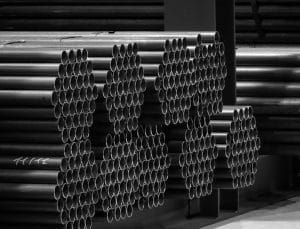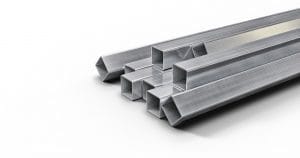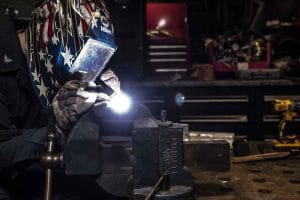A fire extinguisher is a fire protection device with a portable tank to extinguish the fire, the tank generally contains foam, a chemical, or a gas.
There are generally five classes of Fire extinguisher and the purpose of each class is given below.

Note-
Remember the most important thing, when the fire is so dangerous that your personal safety is jeopardized, withdraw from the area immediately and call for help, but if you can safely remove the source of fuel to a fire, do so.
This may include shutting off the source of fuel or disconnecting an electric source from the electrical fire.
Fire Extinguisher Classes
You need to know about the different types of fires and what class of fire extinguisher you need. To understand your fire extinguisher-
Carefully read the instructions to make sure you are using the right extinguisher as intended.
- Class A – Ordinary combustibles
- Class B – Flammable liquids and gases
- Class C – Energized electrical equipment
- Class D – Combustible metals
- Class K or F – Commercial kitchen oils
WARNING: Using an extinguisher for the wrong fire class may cause the fire to spread, re-ignite, or even explode.

The Fire triangle consists of three elements oxygen, heat, and fuel. These three elements are the necessary ingredients for a fire to burn, so the purpose of knowing the Fire triangle is to understand that if any of these elements is removed, a fire can be extinguished.
So our main objective should always be to eliminate one or more of these three elements.
Types of Fire Extinguishers
There are generally 8 types of fire extinguishers:
Water and Foam fire extinguishers
(Use on Class A fires only)
They operate by removing the necessary heat element from oxygen and heat in the fire triangle.
CO2 fire extinguishers
(Use on Class B and C fires)
They remove both the oxygen element and the heat element from the fire triangle.
Dry Chemical fire extinguishers
(Used on Class A, B, and C fires)
It is the most common type of extinguisher. They work by inhibiting chemical reactions involving heat, fuel, and oxygen. These extinguishers tend to create a barrier between the oxygen and the fuel elements of the fire triangle.
Wet Chemical fire extinguishers
(Used on Class K and A fires)
They remove heat from the triangle and also prevent re-ignition by implementing a barrier between the oxygen and fuel elements by creating a layer. These are commonly used to extinguish grease fires in commercial kitchens.
Clean Agent or Halogenated extinguishers
(Used on Class B and C fires)
They work by interrupting the chemical reaction of the fire triangle.
Dry Powder extinguishers
(Used on Class D fires only)
Their functionality is similar to Dry Chemical extinguishers, except they work by separating the fuel from the oxygen or by removing heat from the fire triangle.
Water Mist extinguishers
(Used on Class A and C fires)
They remove the heat element from the fire triangle and serve as an alternative to clean agent extinguishers when contamination is a concern.
Cartridge Operated Dry Chemical extinguishers
(Used on Class B and C fires )
They are generally adapted for rugged conditions that demand more durability than the commonly stored pressure dry chemical extinguisher.
How to Use a Fire Extinguisher
Always read the instructions carefully on the label before using a extinguisher. There are different types of extinguishers for different types of fires—if used incorrectly, they can cause the fire to spread, reignite, or even explode, you can go through serious casualty. Be Safe.
Note-
Once you have sounded the fire alarm and confirmed a safe escape route, you may use a fire extinguisher from a safe distance to extinguish the fire.
A good way to remember how to use a fire extinguisher is the acronym PASS:
Pull the pin in the handle
Aim the nozzle at the source or base of the fire
Squeeze the lever slowly
Sweep from side to side at the base of the fire
Essential Tips for Using a Fire Extinguisher
- Locate and decide the type of fire extinguisher to be used, it should not be located in a place where the fire is most likely to start it should be placed to the side of a fire-prone area, where it can easily be accessible
- Before using an extinguisher, sound the fire alarm to inform everyone about the fire and identify a safe evacuation route.
- Only use a portable fire extinguisher if the fire is confined to a small area.
- Fire extinguisher freezes in low temperatures unless it is treated with an antifreeze solution so do check that.
- Extinguishers must be inspected, maintained, and hydrostatically tested periodically with a checklist attached next to it.
Fire Extinguisher Inspection, Testing, and Maintenance
NFPA 10 standards imply that all extinguishers in the workplace to be inspected, tested, and maintained routinely.
Monthly: All extinguishers must be periodically checked and inspected for damage, correct pressure, broken seals, proper condition of hose and nozzle, and documentation of inspections. It should always be filled.

Annual: Under annual inspections the extinguisher is checked for its pressure, its should be fully pressurized, free from damage, and weighted appropriately. Annual inspections also require a pull test on the pin and replacing the seal as well as a dated inspection tag.
If the extinguisher fails to qualify any of these inspection standards, it must be replaced.
6 Year Maintenance: After every 6 years the contents stored in a pressurized fire extinguisher should be completely removed and inspected at the same time it should be checked inside and outside for any damages, cracks, rust. This must be performed after 72 months from the date of manufacturing.
Hydrostatic Testing: Extinguishers that store specialized chemicals such as Halon or dry chemicals must undergo hydrostatic tests every 12 years. Carbon dioxide extinguishers must be inspected and hydrostatically tested every 5 years.
Note-
Always mention the last inspection date on the maintenance record sheet or tag attached to it.
It’s better to be safe than sorry. Have proper training to identify fire types and Extinguisher classes and one should not forget to train yourself in using an extinguisher.






